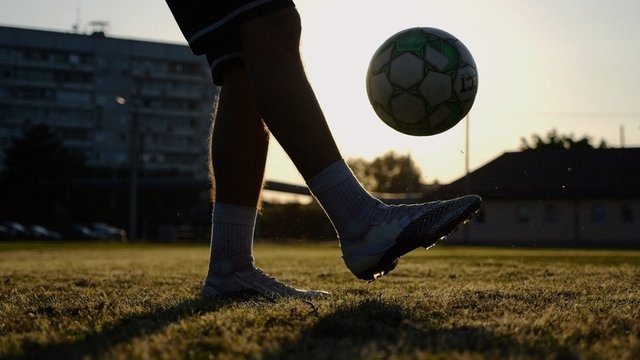

Fights and disagreements in football are very common due to the different personalities and experiences of the members of a team. Therefore, the real challenge in these dynamics is to ensure that all members are able to participate in conflict resolution, fostering an atmosphere of cooperation and respect among all.
If you want to learn about the keys to organisation and leadership in teams, you can do so through one of the qualifications that we offer at Escuela Universitaria Real Madrid - Universidad Europea, such as the Master's in Football Coaching Online and the Master's in Football Coaching in Madrid. These qualifications are specially designed to enhance your professional development and make you a successful coach.
Common causes of fights and conflicts in a football team
Fights in football can arise for a variety of reasons, such as:
Poor communication
Lack of clear and effective communication can lead to misunderstandings and tensions within the team. A clear example is the conflict at Real Madrid between Cristiano Ronaldo and coach José Mourinho, where a lack of clear communication about roles and expectations manifested itself in an argument between the two.
The quest for power
One of the biggest factors contributing to the rivalry is the struggle for control and influence. In the case of Paris Saint-Germain, the rivalry between Neymar and Edinson Cavani for the team's star status was reflected in a power struggle that eventually affected the good atmosphere in the group. Both were eventually transferred to other clubs.
Dissatisfaction with supervisory styles
It is very common that, within a team, players who do not agree with the coach's approach can experience feelings of frustration. The controversy at Chelsea between coach Antonio Conte and several players, such as Diego Costa, showed how differences in supervision and tactics can generate quite serious conflicts that threaten team cohesion.
Lack of leadership
A lack of strong and decisive sporting leadership within the squad can lead to disorganisation and discord. Arsenal's failure in the latter part of the Arsène Wenger era is an example of how the perception of ineffective leadership can negatively impact the whole.
Change of leadership
Changes in team leadership can destabilise the dynamic of the team as a whole. This happened at Barcelona, when the change of leadership and the departure of key figures such as Ronald Koeman created instability and reflected how transitions in leadership can cause internal conflict.
Strategies for preventing and managing fights in a football team
Having a good conflict prevention strategy in football will facilitate problem solving and help to keep the team together. Some of the strategies that can be used to prevent fights in football are:
- Identify and diagnose problems, recognise attitudes that cause conflict and explore possible solutions.
- Improve negotiation skills.
- Put issues to a vote if consensus cannot be reached.
- Use negotiation and arbitration to resolve disputes.
- Use relaxation techniques to calm and control emotions.
Benefits of effective conflict management
Knowing how to prevent problems or how to resolve them satisfactorily once they occur can bring great advantages in optimal team functioning. Examples are:
- Improved team cohesion: effective conflict resolution strengthens relationships between members and fosters a collaborative environment.
- Increased productivity: by resolving conflicts quickly, disruptions are minimised and the team can concentrate on its objectives.
- Fostering open communication: Conflict management promotes an environment where members feel comfortable expressing their opinions and concerns.
- Developing problem-solving skills: well-managed conflicts help members acquire valuable problem-solving skills for the future.
- Reducing stress and dissatisfaction: proper resolution reduces tension and improves team member satisfaction.
- Promoting a healthy working environment: effective conflict management contributes to a climate of mutual respect and understanding.
- Preventing future problems: addressing conflicts proactively can prevent them from escalating into bigger problems.
- Strengthening leadership: the ability to manage conflict effectively reflects and reinforces leadership skills within the team.
The role of the coach and manager in conflict management
As we have noted, good leadership is key to managing and resolving conflicts between team members. This leadership is commonly manifested in the role of the coach or manager in fight management. Their role is to be aware of the team's problems in order to get involved in finding solutions whenever necessary.
If you have ever wondered how to be a football coach, with a solid education such as a Coach in Sports Coaching at Universidad Europea you will be able to prepare yourself to manage conflicts and train as a professional capable of managing disputes effectively, avoiding authoritarian methods and spreading group harmony.
Article published on Sept. 5, 2024